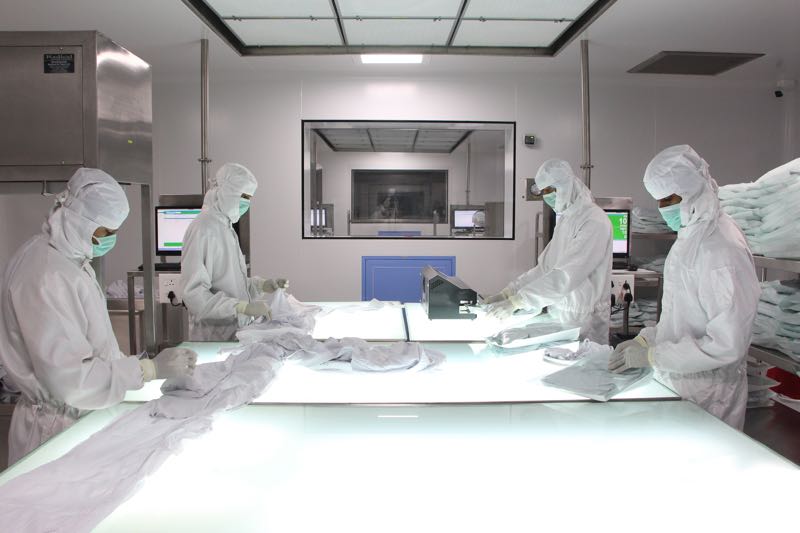Finnish textile company Lindström has plans to grow organically and through acquisitions so to achieve a turnover of €500m by 2020. A family business with a global footprint, the company has been looking for new opportunities; the biggest expectations are currently in Russia and Asia.
In a move to tap into the Indian market, Lindström opened a cleanroom workwear laundry in Pune. The ISO Class 8 facility, which started operations in August this year, is the first-of-its-kind offer in the country. Companies in the industry wash their workwear in-house.
Lindström’s Pune site joins another five overseas facilities, including Hämeenlinna (Finland); Peking, Shanghai and Suzhou (China); and St. Petersburg (Russia). The first cleanroom was opened in Finland in 2006; the site in India is the latest. “Our capacity grows with our customers. As the demand increases we can in an agile way increase our capacity as well,” Lindström’s Anna-Kaisa Huttunen, Senior VP, Business Concept Development, explains.
The laundry in St. Petersburg opened in November 2017 to provide services to the pharmaceutical industry in particular. In Russia, the pharma sector is supported by the government through an initiative aimed at covering 50% of drug consumption with local production instead of the current 20%.
In Pune, many vendors and domain experts were involved in the making of the cleanroom. “What makes the project stand out is the facility, which spreads across 52,000 ft2 area, with a capacity of laundering 400,000 workwear items monthly,” Huttunen says.
Growth opportunities
Demand varies from country to country, so Lindström adapts its offering to serve each customer better. “In China, we have the widest offering with cleanroom garments, including mobs and disposable products such as goggles, wipers, gloves, headcover, masks etc. We see that companies are looking for a professional partner that can take care of a variety of the processes in a way that fulfils the regulatory requirements. That gives us the possibility to increase our offering in all our cleanroom countries in coming years,” Huttunen explains.
In the 2016-2017 period, Lindström grew by 10.9% from €323m to €358m and reported demand for cleanroom laundry services was growing especially in the electronics, food and pharmaceutical industries. According to Huttunen, the cleanroom business is expected to contribute to further growth. “In general, the demand is increasing in several industries due to the increasing requirement of particle-free, sterile or hygiene quality,” she says.
Strategic partner
Huttunen believes the uptick in the market is driven by the emerging BRIC countries (particularly in Russia, India and China) where there is an increasing need for partners that can offer regulatory compliance, reliable monitoring and control of protective clothing. “Customers would like to focus more on their core business; outsourced cleanroom services can help them to save their resources substantially,” she explains.
The growth of the Indian market, Huttunen says, is attracting global players and, as a result, local firms are looking to up their game by meeting global industry standards. “Indian companies are now adopting best practices from global manufacturers and are open to innovative approaches,” she says. “One of the major concerns is to maintain hygiene and safety while manufacturing drug products. Here is where our cleanroom service steps in.”
For Lindström, the growth potential in the pharmaceutical market is beyond 2020. “Demand for medicines is rising rapidly in emerging markets. Generics medicines have a major role to drive-up sales in the BRIC region. Employment in the pharmaceutical industry is steadily growing in this market too,” she explains.
India is, after China, where Lindström sees a huge potential for cleanroom services. “The Indian pharma industry has grown immensely in the past few years and is expected to increase US$55bn by 2020. India is also one of the largest exporters of drug products in the world and the exports are expected to reach US$20bn by 2020,” she says.
There is no doubt demand for cleanroom services, from laundry to consumables, will continue to boom in the coming years.
This articles is featured in the November 2018 issue of Cleanroom Technology. The digital edition is available online.




